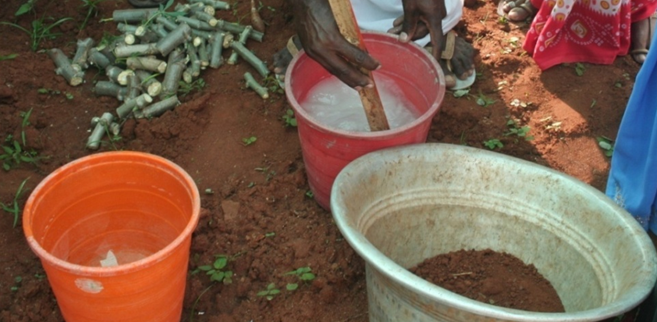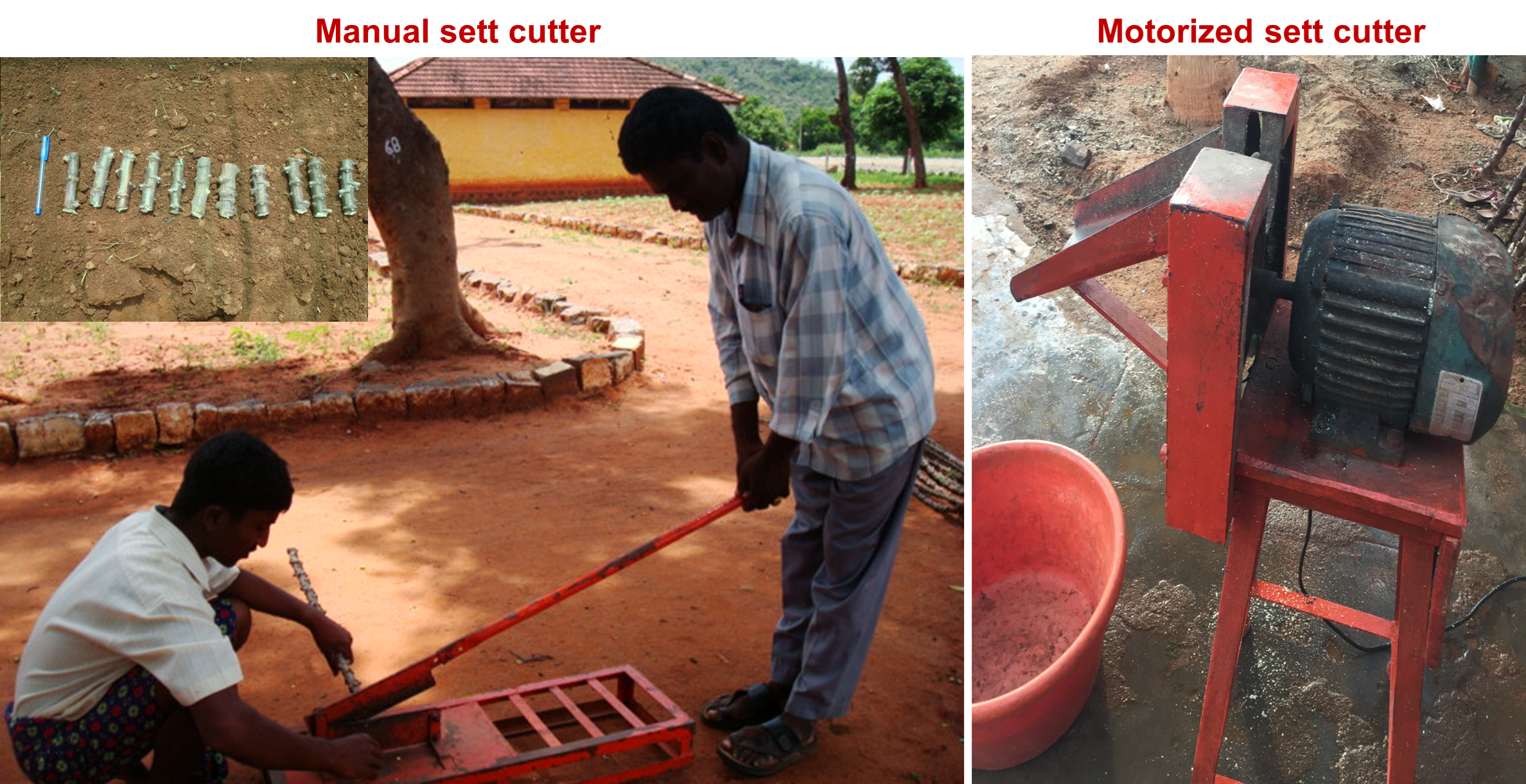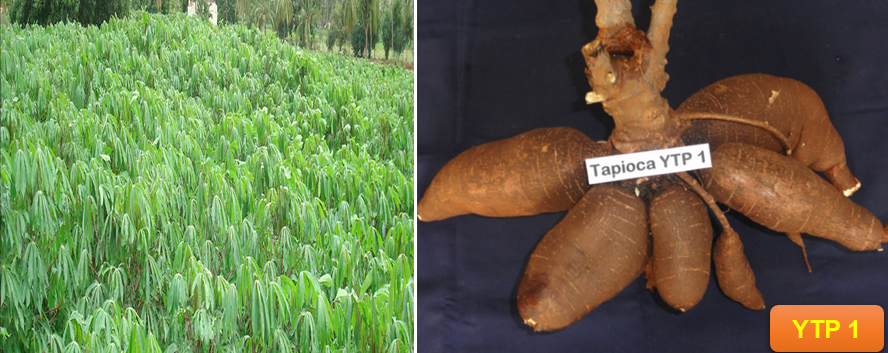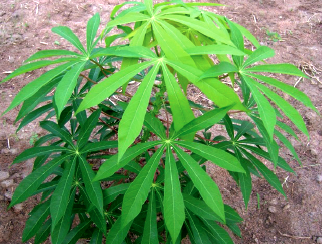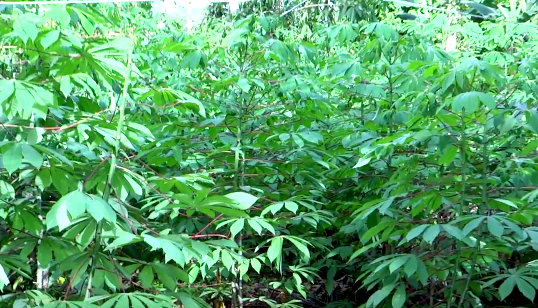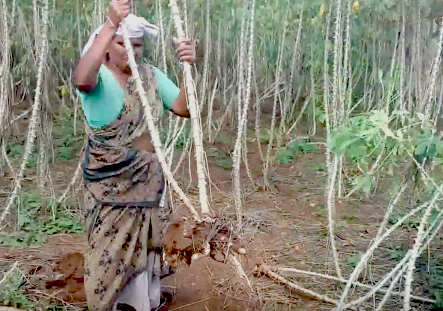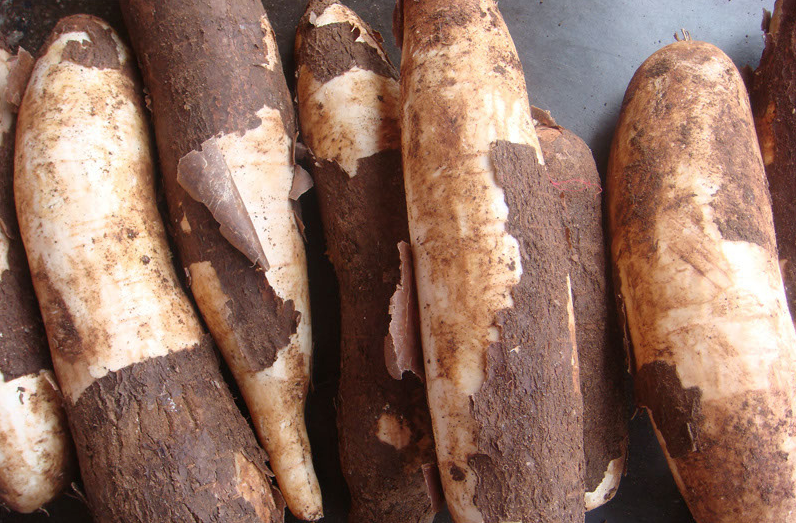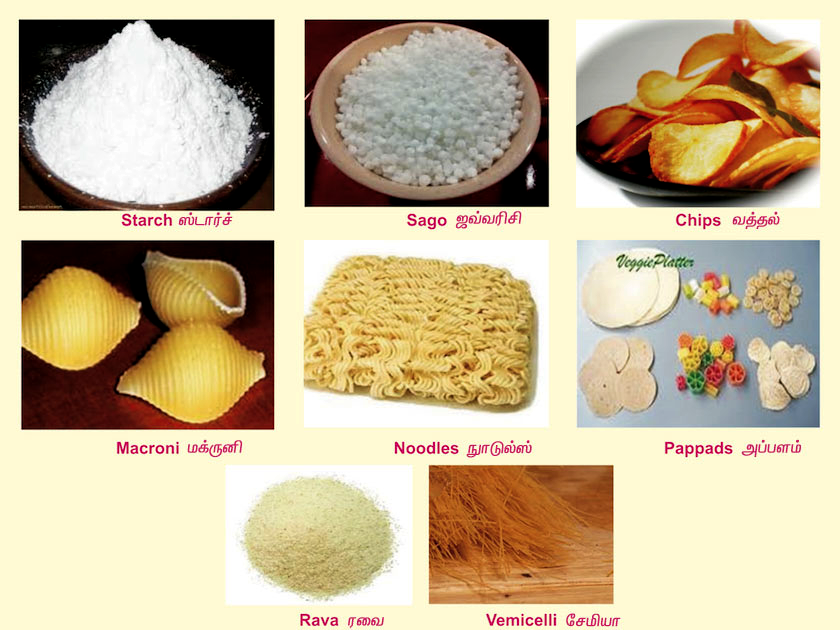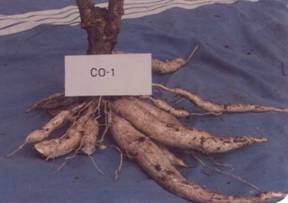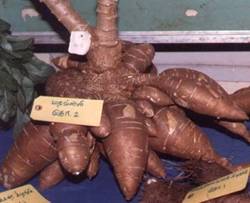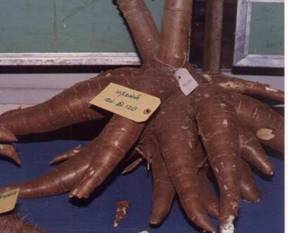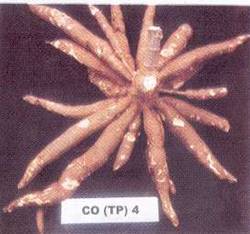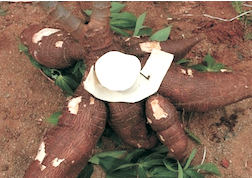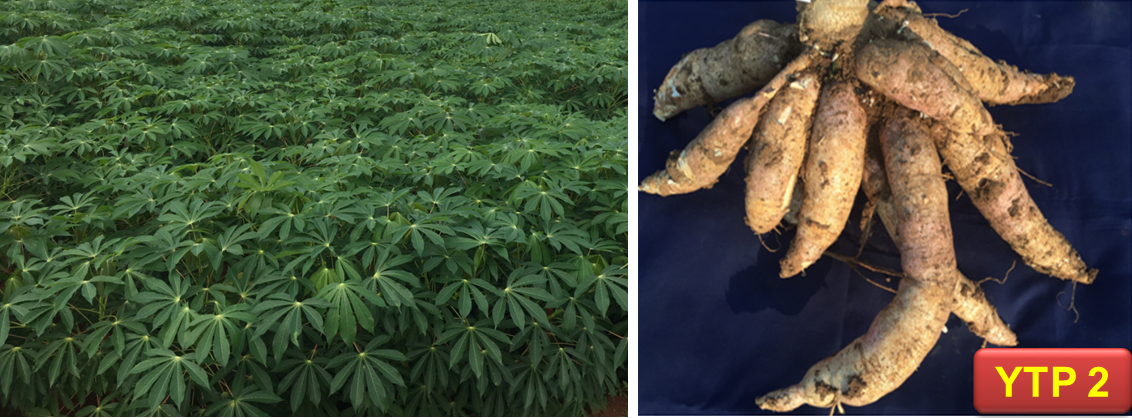
TAPIOCA YTP 2 (2020)
1. |
Parentage |
Selection from Thondamuthoor 1 |
2. |
Duration |
270 - 300 days |
3. |
Season |
November – January under irrigated condition
April – May under rainfed condition |
4. |
Yield |
46.20 t/ha |
5. |
Varieties compared and the percentage of increase in yield over the control |
YTP 1 and H 226 were compared and the per cent increase was 15.94 and 29.85 respectively for tuber yield. |
6. |
Tuber characters |
Tubers are long, cylindrical with pinkish white skin and the rind is pink in colour. Flesh colour is white. Starch content: 29.62% |
7. |
Pest/disease resistance |
Cassava mosaic disease incidence grade is one (no symptom) |
8. |
Special features |
Erect, medium growing and branching type. The inter nodal length is shorter and the leaf size is medium and narrow |
9. |
Area of its adaptability and suitable soil conditions etc. |
Salem, Erode, Namakkal, Perambalur, Dharmapuri, Cuddalore, Villupuram, Ariyalur and Trichy districts under irrigated conditions and with partial irrigation under rainfed conditions.
Soil – Well drained soil preferably red lateritic loam with pH range of 5.5 to 7.0. |
|
Virus elimination through tissue culture in cassava
The protocol for virus elimination through tissue culture has been standardized for the varieties MVD 1 and H 226 by using meristem culture. The Murashige and Skoog (MS) medium supplemented with BAP at 0.1 mg/l for meristem establishment and shoot growth and MS medium without growth regulators for rooting have to be followed. The in vitro plantlets are to be hardened in sterile pot mixture (sand : soil : FYM in 1 : 1: 1) under mist chamber for 10-15 days and later kept under shade net for 10 days before transferring them to the open field..
Preparation of field and planting
Plough the field 4 5 times to get a fine tilth. The soil depth should be atleast 30 cm and form ridges and furrows at the following spacing. Plant the setts vertically with buds pointing upward on the sides of ridges and furrows at following spacing.
Irrigated: 75 x 75 cm (17,777 setts) and 90 x 90 cm (12,345 setts)
Rainfed: 60 x 60 cm (27,777 setts)
Under Kanyakumari conditions: 90 x 90 cm (12,345 setts)
.
Raised bed nursery
Setts are planted closely in raised beds of 1 meter width with convenient length and watering is done regularly. Sprouted setts with a fully opened leaf and bud (10 to 15 days) is transplanted in the main field in the morning or evening hours.
 Raised bed nursery
Raised bed nursery
Irrigation
First irrigation is given at the time of planting. Life irrigation is given on the 3rd day and subsequent irrigation are done once in 7 10 days upto 3rd month and once in 20 30 days upto 8th month after planting. Irrigation is done based on the soil moisture regims. Avoid excessive irrigation.
Drip irrigation
Install drip system with main and sub-main and place the inline laterals at the interval of 1.5 m. Place the drippers at the interval of 60 cm for 4 LPH and 50 cm for 3.5 LPH in the lateral system. Form the raised beds at 120 cm width at an interval of 30 cm and place the laterals at the centre of each bed.
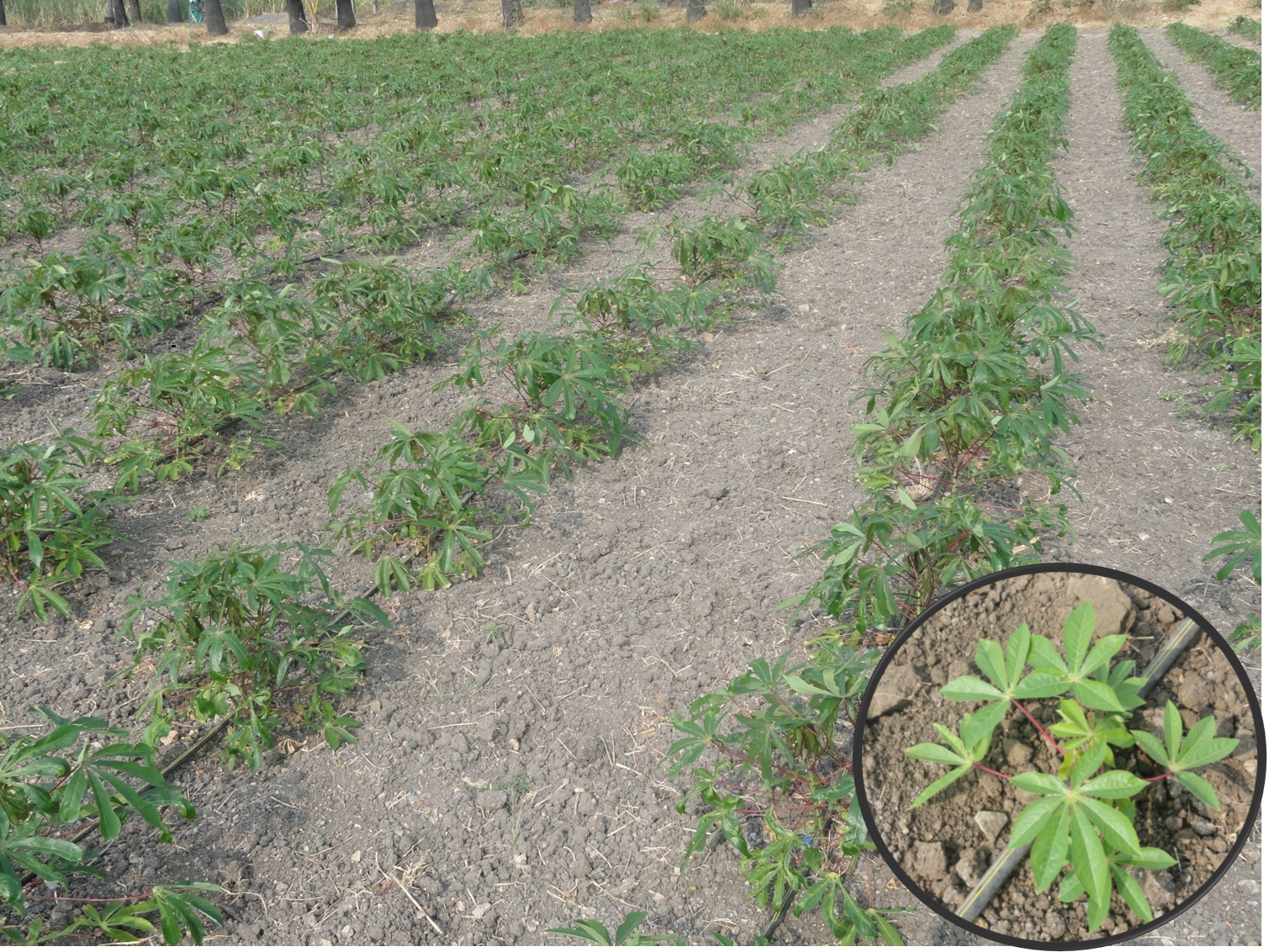
Sequential cropping
Raise Co 2 vegetable cowpea during March and harvest green pods before planting cassava during June July. After green pod harvest, incorporate the cowpea haulms into the field by disc ploughing. Through sequential cropping 50% reduction in application of FYM (12.5 t/ha) and P (30 kg/ha) is ensured.
Manuring
Irrigated crops
Apply 25 t/ha FYM and incorporate at the time of ploughing. Apply 45:90:120 kg NPK/ha as basal and 45:120 kg NK/ha on 90 days after planting during earthing up.
Rainfed crop
FYM at 12.5 t/ha along with 50 kg N, 65 kg P and 125 kg K/ha is applied as basal. 2 kg of Azatobactor is appliedas soil application at 30 60 days after planting on receipt of showers (2.0 kg Azatobacter + 20 kg FYM + 20 kg soil per hectare).
Fertigation
Fertigation requirement: 90: 90 :240 kg of NPK / ha. Apply once in every three days throughout the cropping period.
Spacing: 60 x 90cm in paired row system.
Fertigation schedule: Tapioca (variety)
| Stage |
Crop stage |
Duration in days |
Fertilizer grade |
Total Fertilizer (kg/ha) |
Nutrient applied |
% of requirement |
| N |
P |
K |
N |
P |
K |
| 1 |
Planting to crop
establishment |
20 |
19:19:19
+MN
13.0:45
0-0-50 |
23.57 34.67
7.87 |
4.48 4.50
- |
4.48 -
- |
4.48 15.60
3.93 |
10.00 |
5.00 |
10.00 |
| Subtotal |
8.98 |
4.48 |
24.01 |
|
|
|
| 2 |
Vegetative stage |
30 |
12:61:0
13:0:45
Urea |
11.40
105.33
26.80 |
1.34
13.69
12.33 |
6.80
-
- |
-
47.39
- |
30.00 |
7.50 |
20.00 |
| Subtotal |
27.36 |
6.80 |
47.39 |
|
|
|
| 3 |
Tuber formation stage |
35 |
12:61:0
0:0:50
Urea |
11.40
144.00
55.73 |
1.34
-
25.64 |
6.80
-
- |
-
72.00
- |
30.00 |
7.50 |
30.00 |
| Subtotal |
26.98 |
6.80 |
72.00 |
|
|
|
| 4 |
Tuber development stage |
35 |
19:19:19 + MN
0-0-50
Urea |
23.57
182.67
48.87 |
4.48
-
22.48 |
4.48
-
- |
4.48
92.34
- |
30.00 |
5.00 |
40.00 |
| Subtotal |
26.96 |
4.48 |
96.82 |
|
|
|
| Total |
90.28
(or)
90 |
22.56 (or)
22.50 |
240.22
(or) 240 |
100 |
25 |
100 |
75% RD of Phosphorus applied as superphosphate 421.88 kg/ha.
1. 19:19:19 = 47. kg / ha.
2. 13:0:45 = 140kg/ha.
3. 12:61:0 = 23kg/ha
4. 0:0:50 = 335kg / ha
5. Urea = 132 kg / ha.
Cassava Booster
This product is the mixture of organic manure viz., cow dung, neem cake and biocontrol agent along with inorganic nutrients to overcome the CMD, nutritional deficiencies, increasing tuber yield and improving starch content in cassava. Cassava Booster has to be applied as foliar spray during 2nd, 3rd and 4th months after planting. .
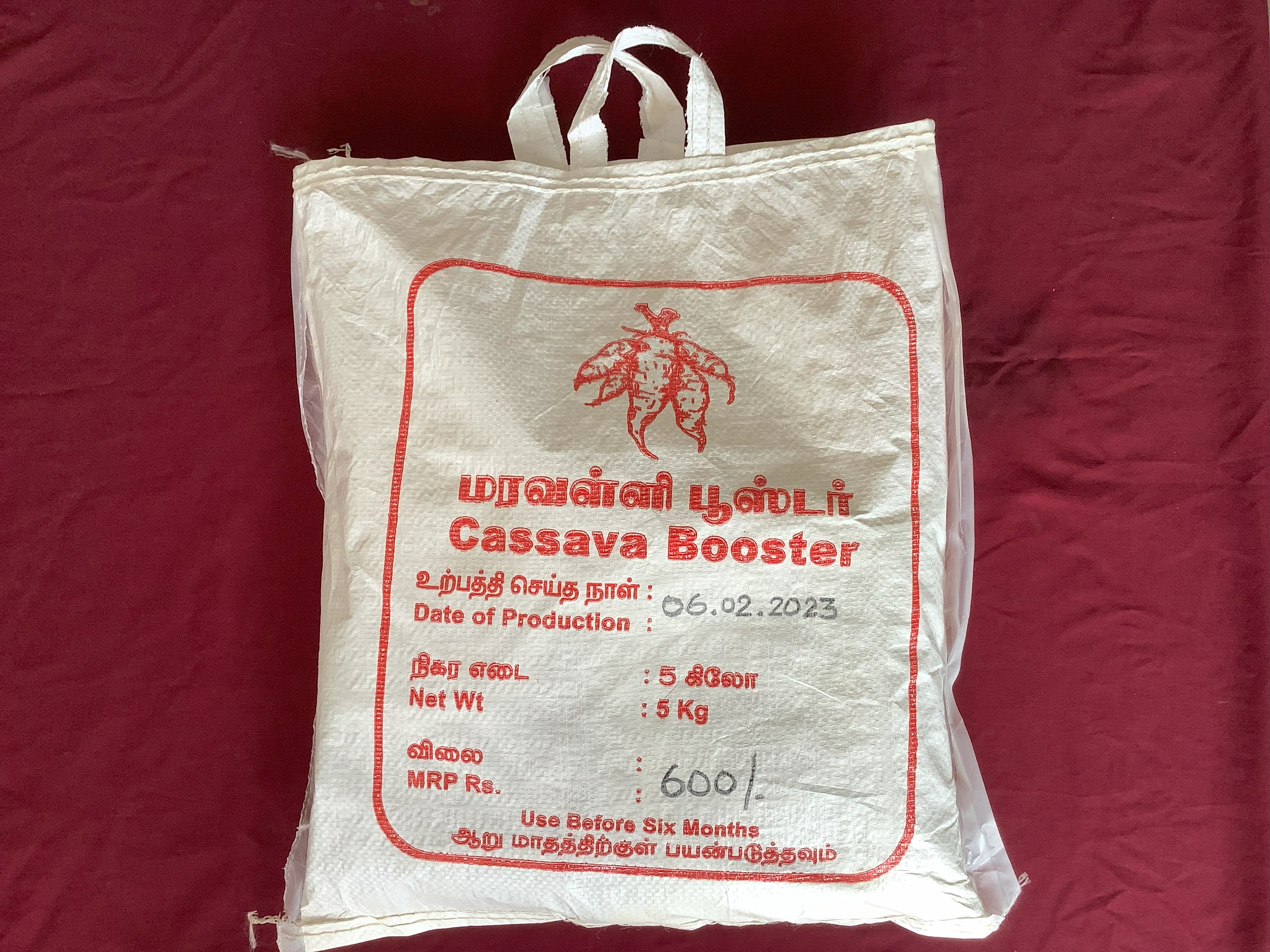 Cassava Booster
Cassava Booster
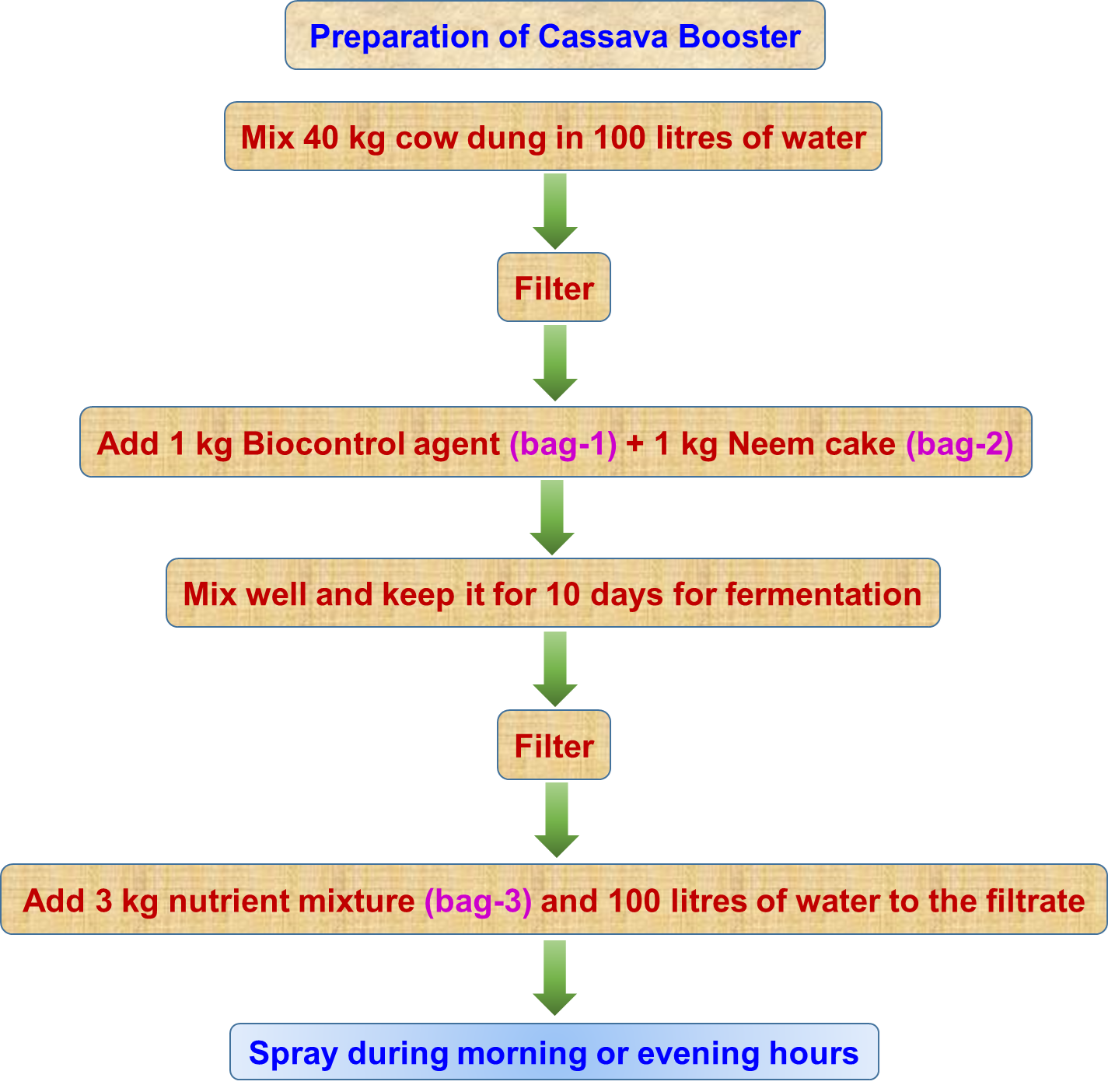 Cassaava Booster preparation
Cassaava Booster preparation
Chlorosis
Micro nutrient deficiency can be controlled by foliar spraying of 1% FeSO4 + 0.5% ZnSO4 at 60 and 90 DAP.
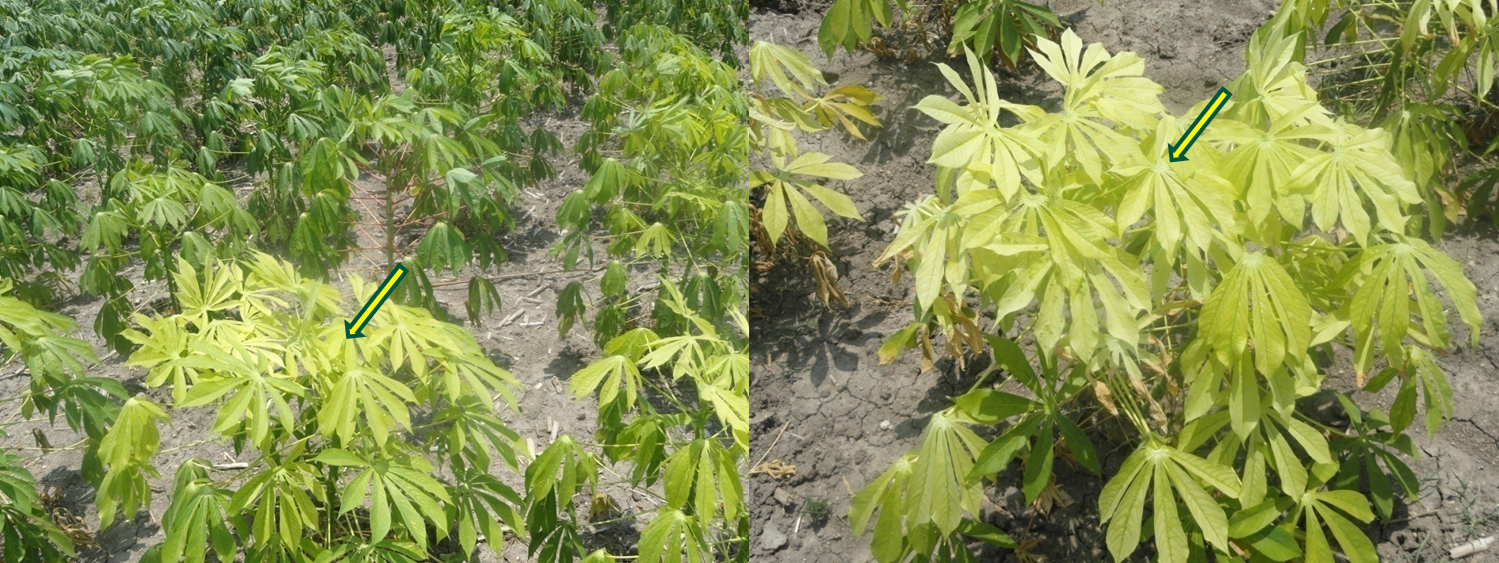
After cultivation
Gap filling should done within 20 days of planting. Carry out 1st weeding 20 days after planting. Subsequent weeding should be done once in a month upto 5 months depending upon the weed intensity. Thin one to two shoots per plant during 60th day. Grow aggregatum onion, coriander, short duration pulses and short duration vegetables as intercrops upto 60 days after planting.
Thin to two shoots per plant during 60th day. Grow aggregatum onion, coriander, short duration pulses and short duration vegetables as intercrops from planting date upto 60 days.
Central Tuber Crops Research Institute
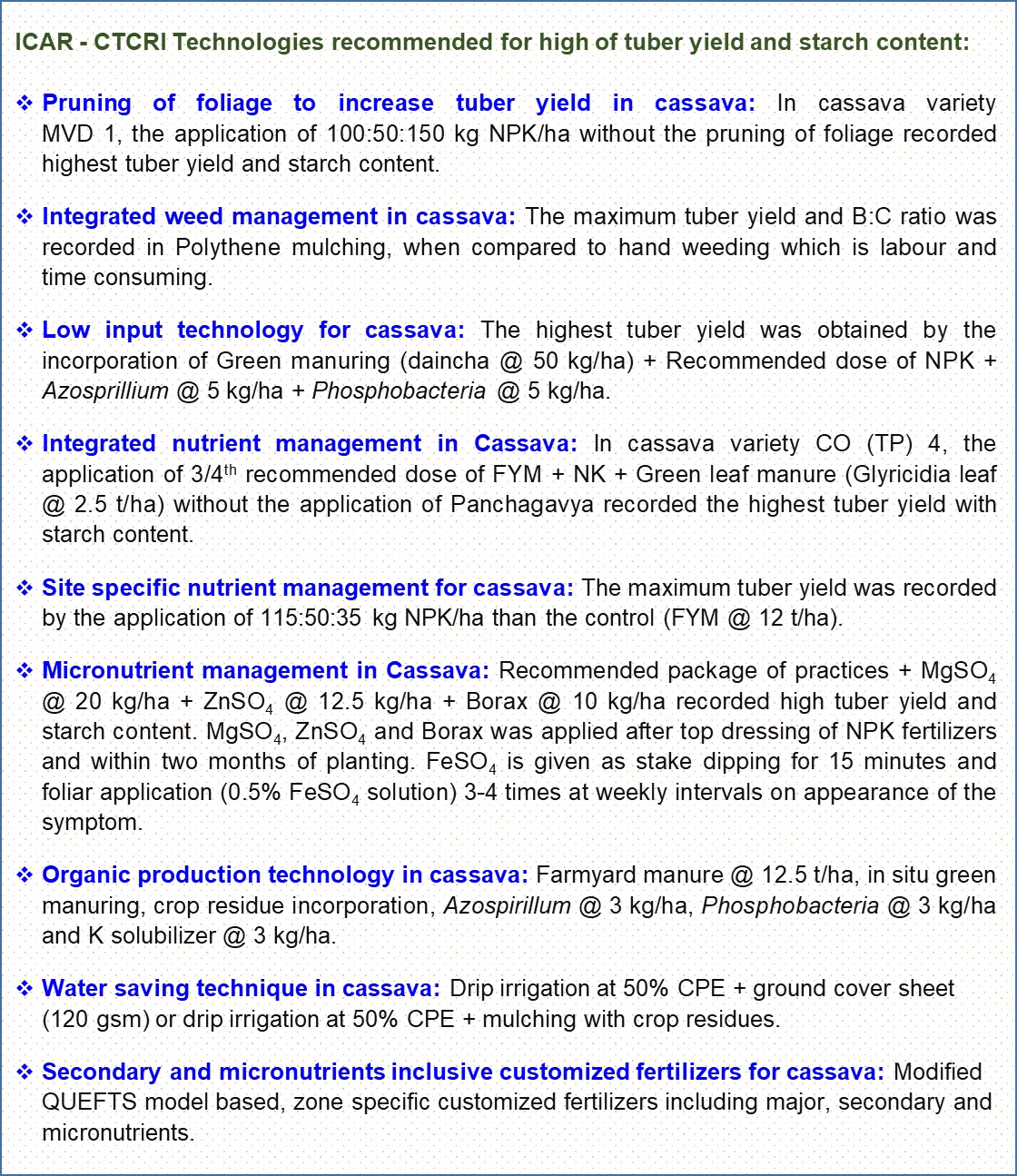 CTCRI (Central Tuber Crops Research Institute) Technologies
CTCRI (Central Tuber Crops Research Institute) Technologies
Plant protection
Pests
Mites
Mites can be controlled by spraying either Dicofol @ 2.5 ml/lit (or) Propargite 2.0 ml/lit (or) Spiromesifen 1.0 ml/lit (or) Fenazaquin 2.0 ml/lit during the appearance of symptoms.
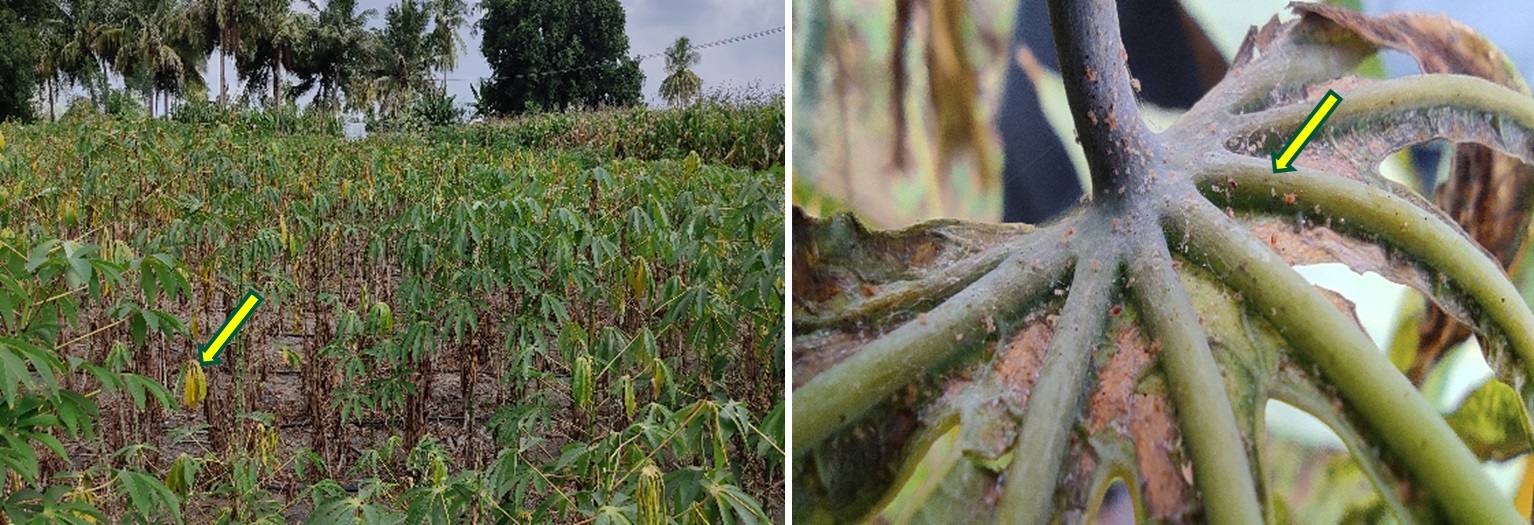
Cassava Mealy bug
Release of Anagyrus lopezi 100 nos./acre. Avoid spraying of chemicals..
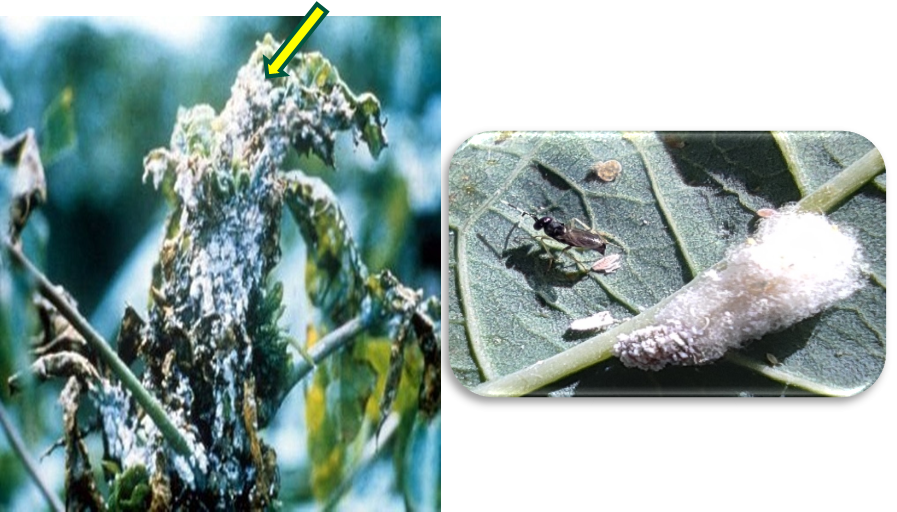
White fly (Bemisia tabaci)
Integrated pest management practices:
1. Remove alternate weed hosts viz., Abutilon indicum..
2. Install yellow sticky trap at 12 Nos/ha.
3. Use nitrogen judiciously.
4. Avoid excessive irrigation.
5. Spray neem oil 3 % or fish oil rosin soap 25 g/lit or Phosalone 35 EC @2.5 l/ha
(or) Quinalphos 25 EC @ 2.0 l/ha (or) Triazophos 40 EC 2.0 l/ha. While using
neem oil, sticking agent should be added at 1 ml/lit for better contact with foliage
.
6. Avoid use of synthetic Pyrethroids.
7. Avoid extending the crop growth beyond its duration.
Spiralling whitefly
1. Install sticky cum light trap and operate between 4 to 6 a.m to attract the adult..
2. Spray Triazophos 40 EC 2 ml/lit along with 0.5/l of wetting agent
the adult.
3. Conserve parasitoids Encarsia haitiensis, E. guadeloupae. Add
wetting agent.
4. Conserve parasitoids Encarsia haitiensis, E. guadeloupae.
Diseases
Cassava Mosaic Disease
Select the planting materials from healthy plants. It is suggested to grow the resistant varieties like YTP 2, Sree Reksha and Sree Kaveri. For the control of white fly vectors, adopt IPM practices mentioned above.
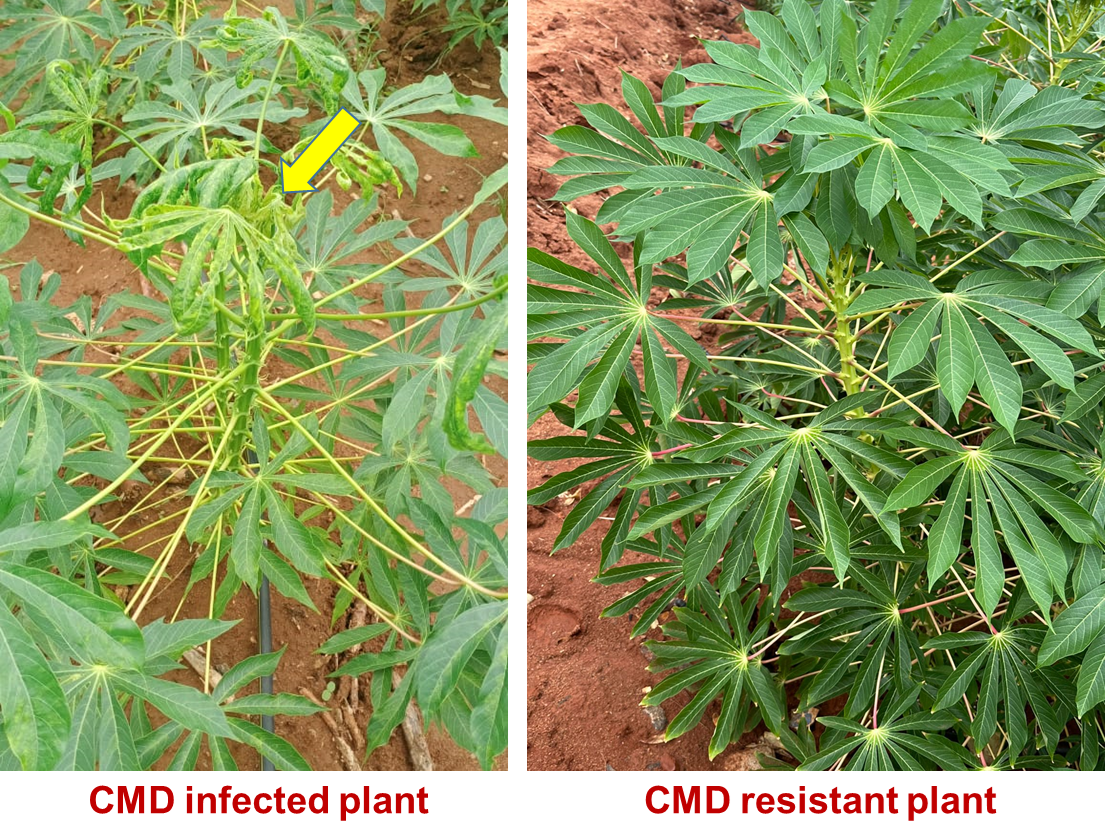 CMD Infect Plant CMD Resistant Plant
CMD Infect Plant CMD Resistant Plant
Cercospora Leaf spot
Cercospora leaf spot can be controlled spraying Mancozeb at 2 g/lit twice at 15 days interval.
Tuber rot
Avoid water stagnation and ensure proper drainage facilities. Spot drenching with Copper oxychloride 2.5 g/lit. As prophylactic measure, apply Trichoderma viride @ 2.5 kg/ha mixed with 100 kg of well rottened FYM as basal during last ploughing and subsequently at 3rd and 6th month after planting.
Harvest
Crop can be harvested at 9 to 11 months after planting. Table purpose or culinary purpose varieties matures between 8 to 8 ½ months, while the industrial varieties matures at 9½ to 10 months. During tuber maturity, the leaves become yellow and 50 % of leaves become dried and sheds off. The soil near the stem base of the stem shows cracking. Tubers can be uprooted manually or by using fork or crow bar at optimum soil moisture condition and then tubers are cleaned, loaded and sent to the processing units..
Yield
Irrigated : 40 - 50 t/ha
Rainfed : 20 - 25 t/ha
TNAU - TRACTOR OPERATED CASSAVA HARVESTER
Suitable for harvesting in single row/two row planting system
Operated with 50 HP tractor
Able to harvest 0.7 ha/day in single row planting and 1.0 ha/day in two planting system
Use of this harvester save labour, time and money
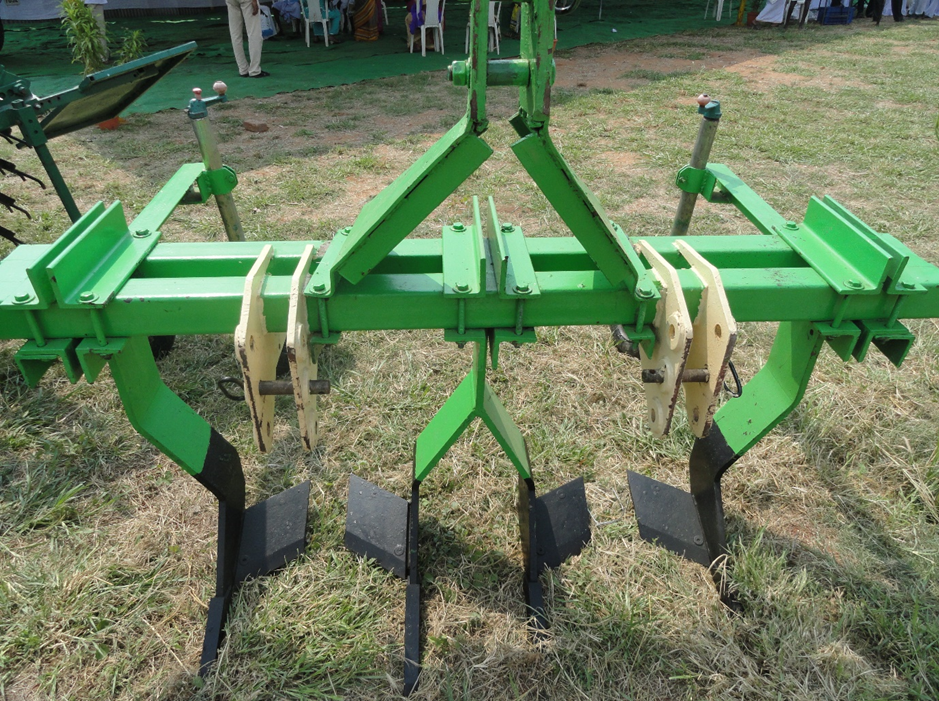 Cassava Harvester
Cassava Harvester
ICAR - CTCRI CASSAVA MOTORISED CHIPPING MACHINE
Operated with one HP motor
The output of the motorised chipping machine ranged from 300 kg to 1000 kg and the ranged thickness from 2.5 mm to 10 mm
Higher output
Easy to operate
Production of uniform sized chips
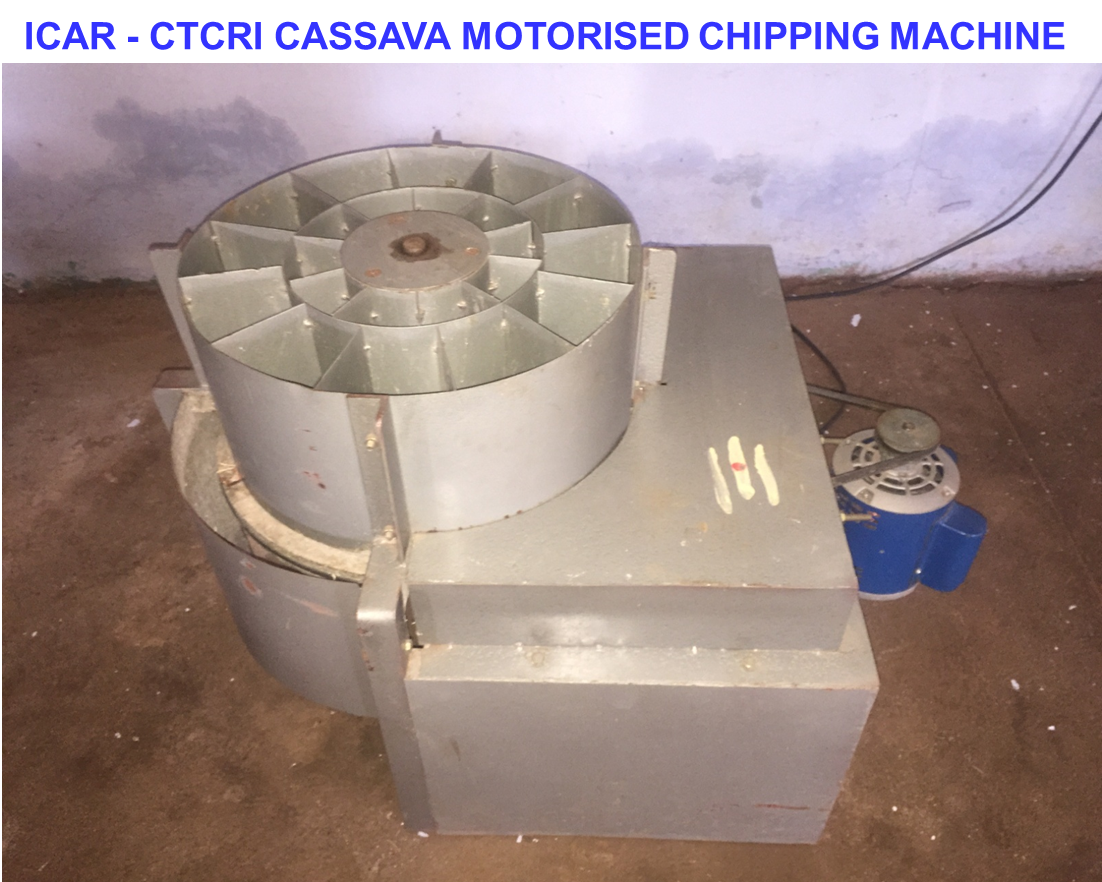 ICAR - CTCRI CASSAVA MOTORISED CHIPPED MACHINE
ICAR - CTCRI CASSAVA MOTORISED CHIPPED MACHINE
ICAR - CTCRI MULTIPURPOSE MOBILE STARCH EXTRACTION UNIT FOR TUBER CROPS
Adjustable chip thickness
This machine is used for the extraction of starch from tapioca tubers
This machine can be operated with the capacity of 200 kg per hour and the starch recovery is 84%.
 MOBILE STARCH EXTRACTION UNIT
MOBILE STARCH EXTRACTION UNIT
ICAR CTCRI SAGO GLOBULATOR
Operated with one HP motor
Easy to operate
Production of uniform sized sago granules
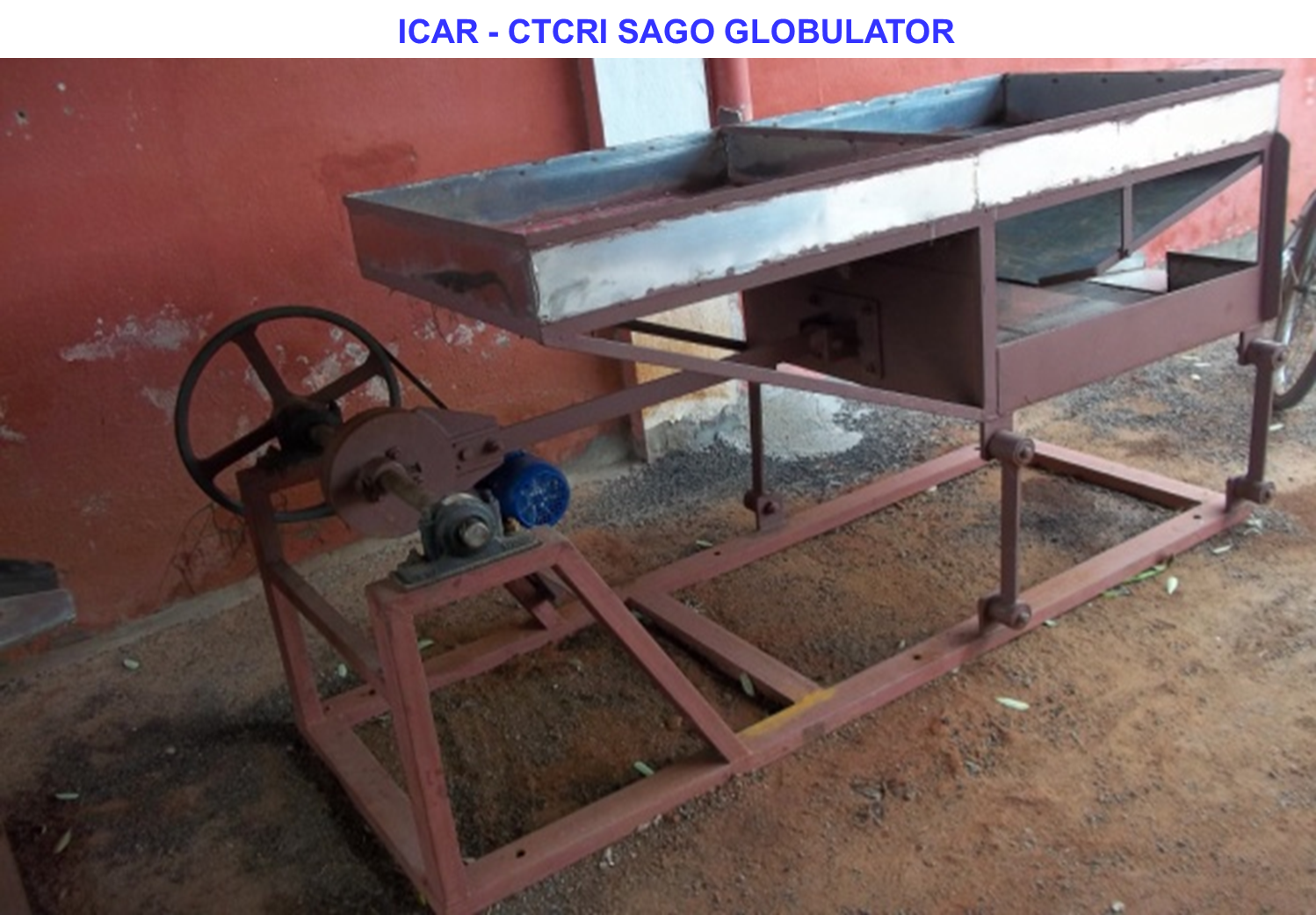 Sago Globulator
Sago Globulator
Value added products: Sago, Tapioca flour, Rava, Chips, Papads, Noodles, Wafers, Biscuits, pasta products, Sago Kheer, Sago Vadagam
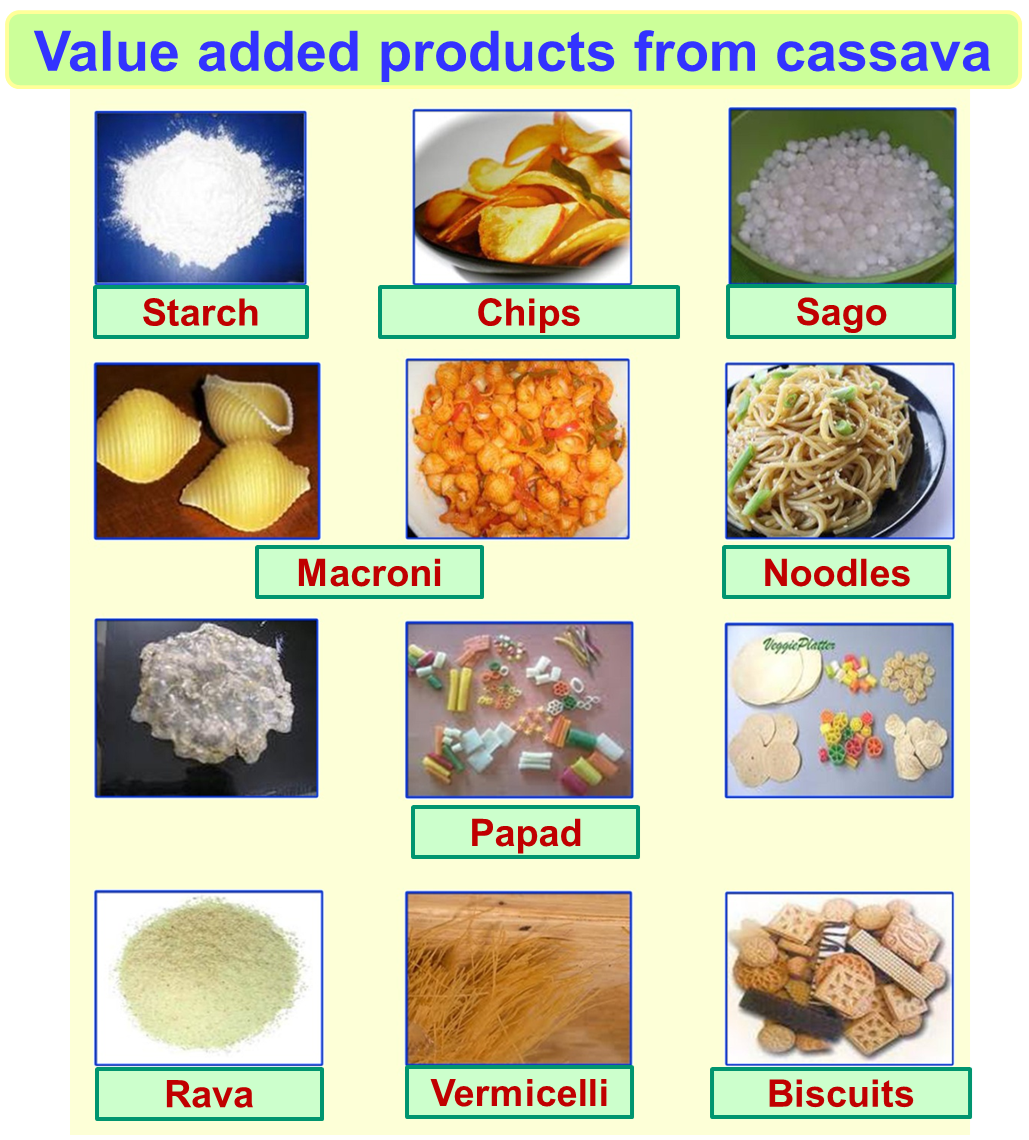
Market Information: Sago, Tapioca flour, Rava, Chips, Papads, Noodles, Wafers, Biscuits, pasta products, Sago Kheer, Sago Vadagam
Market Information
| Crop Growing districts |
: |
Salem, Namakkal, Erode, Dharmapuri, Kallakurichi, Villupuram, Cuddalore, Pudukottai, Sivagangai and Kanyakumari |
| Major markets in Tamil Nadu |
: |
Salem, Namakkal, Dharmapuri, Erode |
For planting materials of Tapioca and Cassava Booster please contact
The Professor and Head
Tapioca and Castor Research Station
Yethapur 636 119
Puthiragoundenpalayam
Salem District
Phone: 04284-299731
email: arsyethapur@tnau.ac.in

